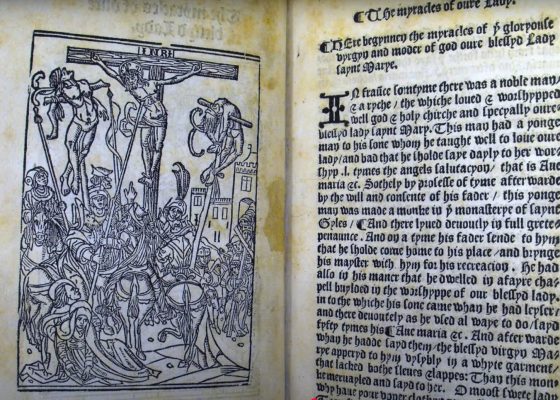
- October 6, 2025
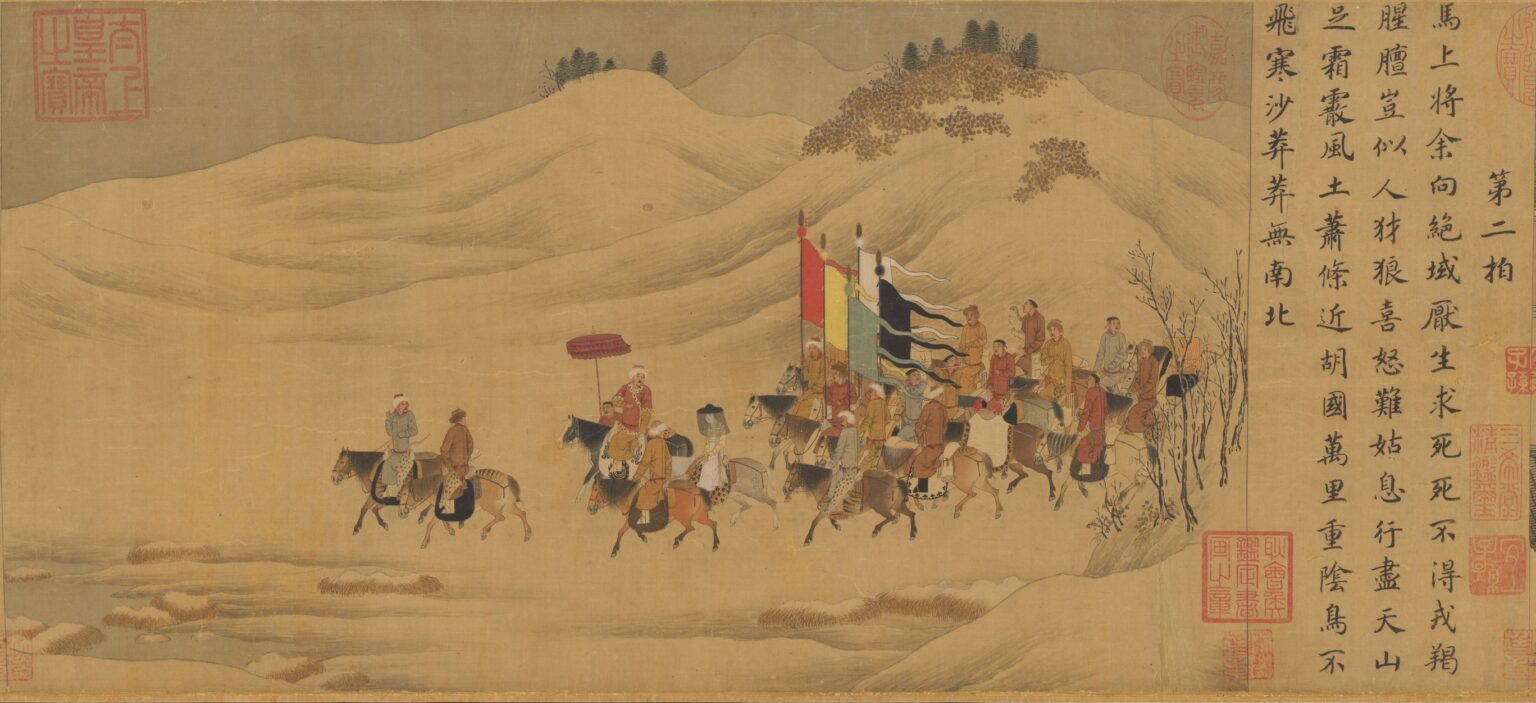
By Staff Middle Land
By Shi-yee Liu
«The genre of narrative painting in China reached full maturity as early as the fourth century and continues to thrive today. The exhibition Show and Tell: Stories in Chinese Painting—on view at The Met Fifth Avenue through August 6, 2017—explores how Chinese painters have told stories that promote political and cultural agendas or communicate personal thoughts. Presenting more than 60 paintings and prints dated from the 12th century to the present, this exhibition demonstrates the continuing vitality and relevance of the genre.»
Show and Tell is organized into three sections, with each featuring a different type of narrative. The most familiar of these is the long handscroll format used to illustrate a story in multiple scenes. As each of the handscrolls unrolls section by section from right to left, either in a continuous landscape setting or in scenes punctuated by corresponding texts, the viewer is transported through time and space. Measuring more than 39 feet in length, Eighteen Songs of a Nomad Flute: The Story of Lady Wenji (fig. 1) depicts the traumatic experience of Lady Wenji (Cai Yan), who was abducted by Mongolian nomads in 195 A.D. and returned to China 12 years later. The recurring sight of south-flying geese alludes to her homesickness, while intimate scenes of Wenji with her chieftain husband and their children deepen the pathos of the farewell scene as she is forced to leave them behind. Although this work was created in the early 15th century, this historical story resonates deeply with the issues of ethnicity and displacement of our own time.
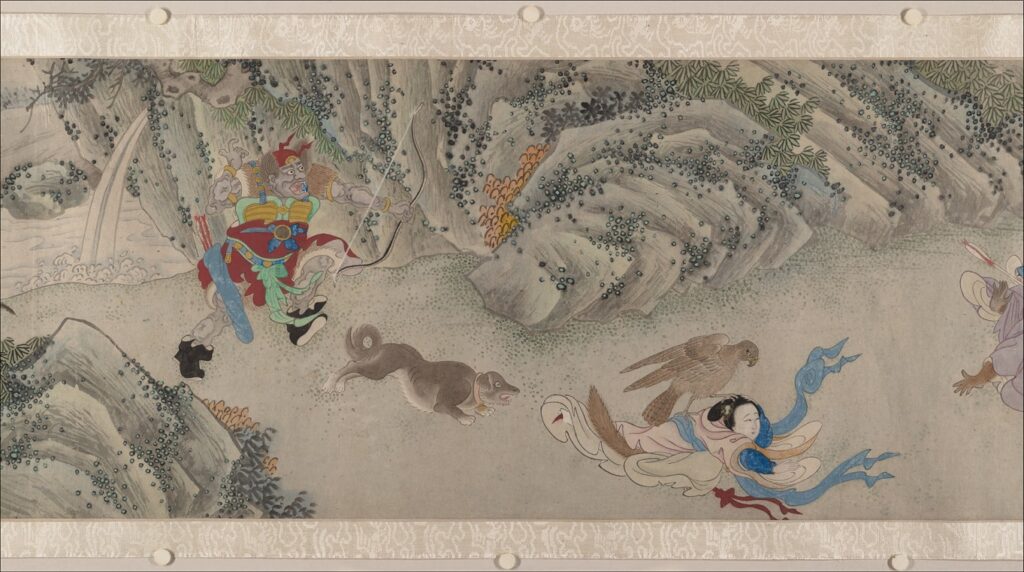
Without any explanatory texts, Searching the Mountains for Demons by Zheng Zhong (active ca. 1612–1648) (fig. 2) depicts a demigod and his ghostly entourage ridding the landscape of demonic creatures. The exorcist operation zigzags through a series of vignettes featuring demons in the form of wild beasts or charming women, whose true identities are revealed by their claws and tails. The dynamic composition conveys the frenzied pace of the hunt as disturbing images of violence are balanced by humorous encounters and the exertions of the hunters.
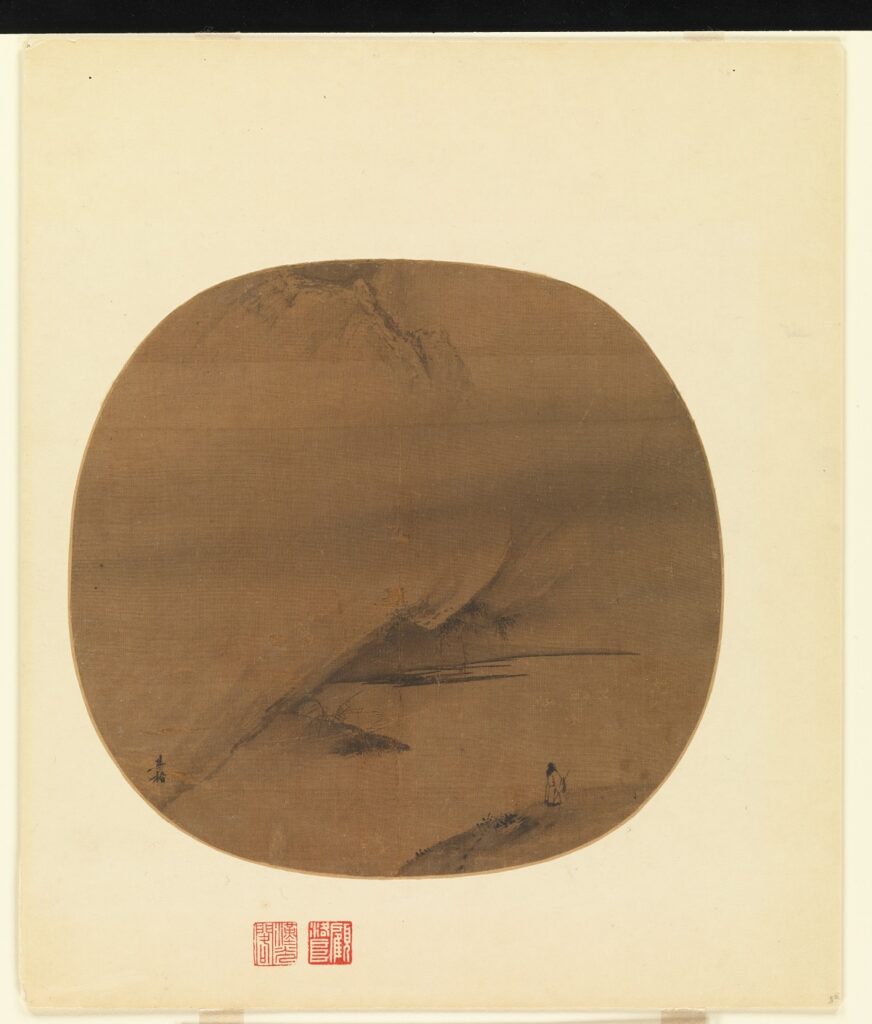
The second type of narrative highlighted in the exhibition relies on a single iconic scene—usually the climax—to evoke an entire story in the viewer’s mind. A painting by the monk-artist Liang Kai (active early 13th century) exemplifies this style. In Poet Strolling by a Marshy Bank (fig. 3), a lone figure lingers by a marshy bank under a massive, mist-enshrouded boulder. The work hauntingly depicts the final moments in the life of Qu Yuan (ca. 340–ca. 278 B.C.), a falsely slandered minister who took his own life by drowning in order to prove his devotion to the king, without showing any other biographical detail. The looming rock, a metaphor for the psychological weight sustained by the man below, is key to identifying the subject matter.
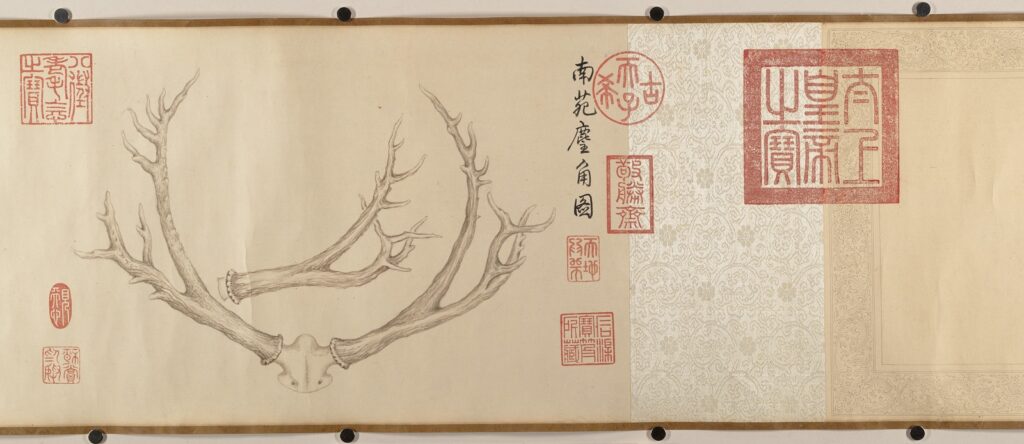
The third type of storytelling is represented by landscapes, still lifes, and flower-and-bird paintings that contain no narrative imagery but tell stories in their appended inscriptions. A typical example is a painting of deer antlers (fig. 4) by Emperor Qianlong (r. 1736–95). An otherwise simple still life, the picture is followed by the emperor’s long inscription that relates when and where the deer was hunted down by his grandfather, the Kangxi Emperor, and reflects upon Kangxi’s prowess and the martial values in his Manchu tradition. This type of storytelling is an important and distinctively Chinese practice, one that has never been recognized in exhibitions exploring narrative subjects.
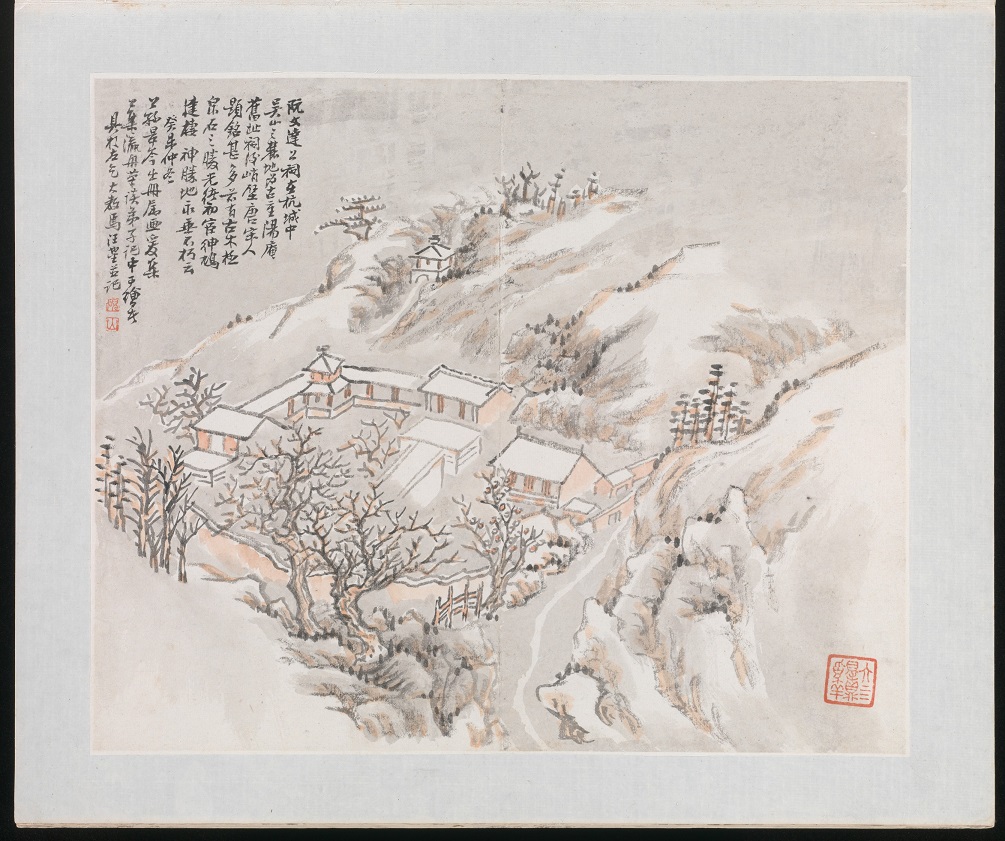
Most of the objects in the exhibition are taken from The Met collection; some are new acquisitions on view for the first time, while others have not been seen for many years. A few works that had been shown in partial view in past shows now enjoy a complete display, such as Wang Jun’s (1816–after 1883) album on select sites in Yangzhou and Hangzhou (fig. 5), which serves as a pictorial biography of the eminent scholar-official Ruan Yuan (1764–1849). This new display of all 10 pictures in the album, rearranged in chronological order, enables a comprehensive and evolving view of the man’s life.
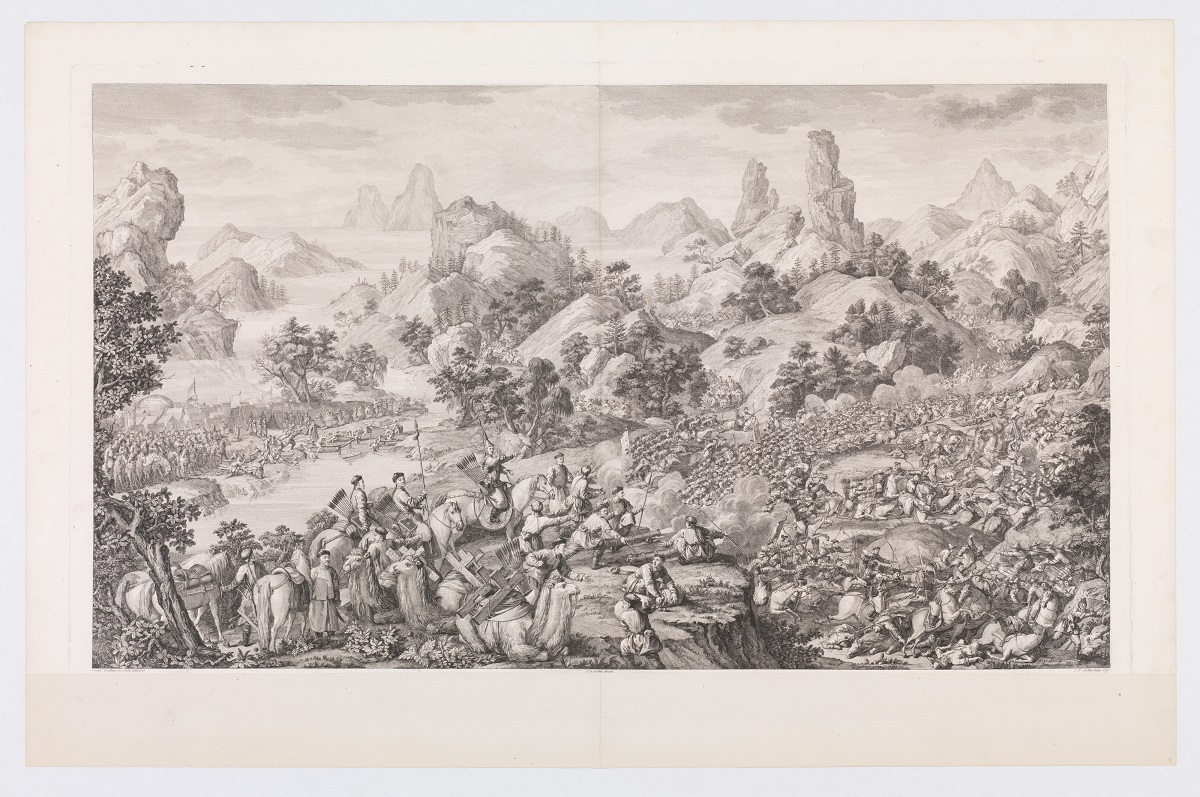
Further showcasing The Met’s ability to draw on its own holdings for a multicultural exhibition is a gallery on military narrative, the objects of which represent the collaboration of three curatorial departments. The subject of the gallery is Emperor Qianlong’s East Turkestan campaign from 1755 to 1759, which ended with the annexation of Xinjiang (New Territories). The centerpiece, from the Department of Drawings and Prints, is a suite of sixteen copperplate engravings that illustrate ten battles and six ceremonies (fig. 6). Designed in the Western naturalistic style by European missionary-artists at Qianlong’s court, more than 200 sets of prints were produced at the imperial workshop of Louis XV (r. 1715–74) in Paris.
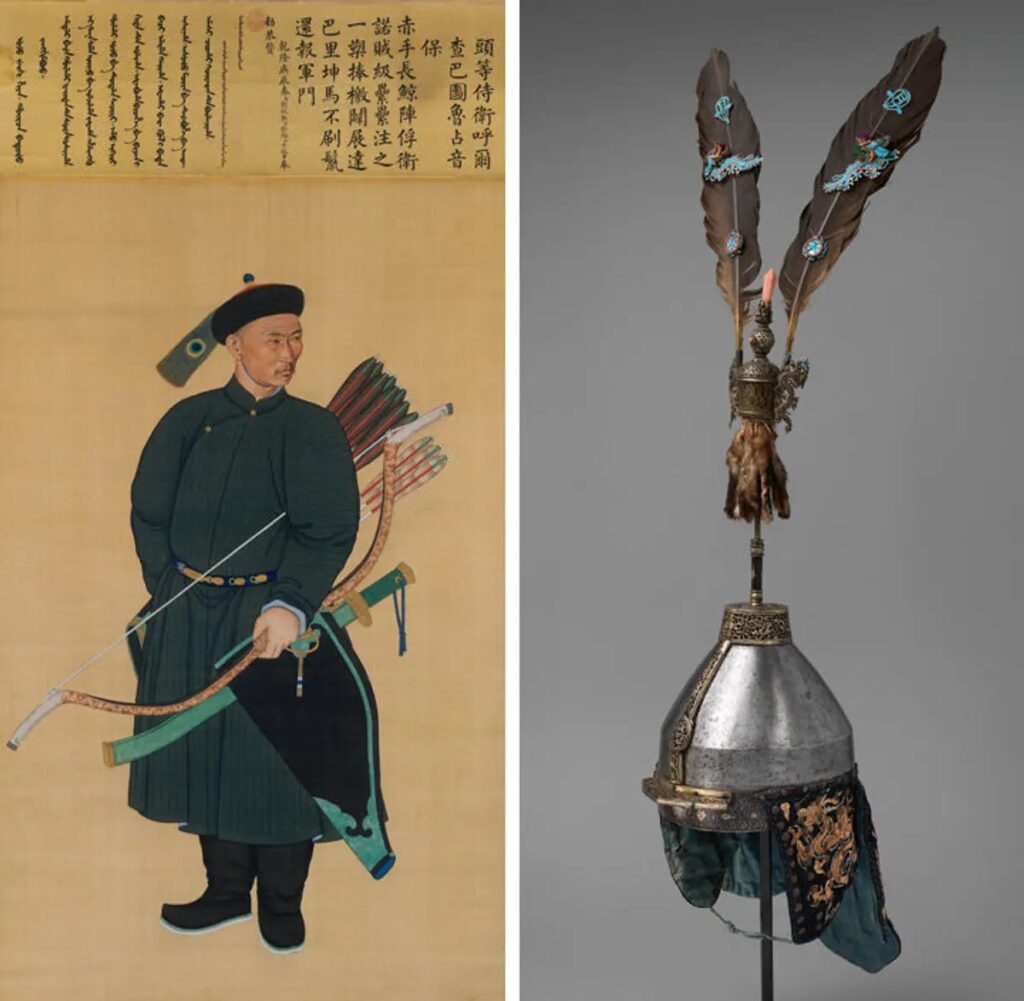
The large full-length portrait of a general (fig. 7), one of 100 commissioned by Qianlong for those who made significant contributions to the campaign, belongs to the Department of Asian Art. A dozen 18th-century Chinese weapons and horse fittings from the Department of Arms and Armor, selected by Curator Donald LaRocca, evoke a physical sense of warfare. It is notable how close some pieces look to those represented in the prints and the portrait. The helmet with a feather crest for a high-ranking military officer (fig. 8), for instance, is worn by the commander on horseback in the center foreground of the print hung on the opposite wall (fig. 6).
In addition, there are works on view by contemporary artists addressing current issues raised by technological advancements and government land policy, or revealing personal creative processes—subjects not in the classical repertory. The exhibition presents a most comprehensive view of Chinese pictorial storytelling with many illuminating and engaging samples.
Shi-yee Liu
Shi-yee Liu is an assistant research curator of Chinese art in the Department of Asian Art.
Original article: The Metropolitan Museum of Art










Cancel anytime


Using our website
You may use the The Middle Land website subject to the Terms and Conditions set out on this page. Visit this page regularly to check the latest Terms and Conditions. Access and use of this site constitutes your acceptance of the Terms and Conditions in-force at the time of use.
Intellectual property
Names, images and logos displayed on this site that identify The Middle Land are the intellectual property of New San Cai Inc. Copying any of this material is not permitted without prior written approval from the owner of the relevant intellectual property rights.
Requests for such approval should be directed to the competition committee.
Please provide details of your intended use of the relevant material and include your contact details including name, address, telephone number, fax number and email.
Linking policy
You do not have to ask permission to link directly to pages hosted on this website. However, we do not permit our pages to be loaded directly into frames on your website. Our pages must load into the user’s entire window.
The Middle Land is not responsible for the contents or reliability of any site to which it is hyperlinked and does not necessarily endorse the views expressed within them. Linking to or from this site should not be taken as endorsement of any kind. We cannot guarantee that these links will work all the time and have no control over the availability of the linked pages.
Submissions
All information, data, text, graphics or any other materials whatsoever uploaded or transmitted by you is your sole responsibility. This means that you are entirely responsible for all content you upload, post, email or otherwise transmit to the The Middle Land website.
Virus protection
We make every effort to check and test material at all stages of production. It is always recommended to run an anti-virus program on all material downloaded from the Internet. We cannot accept any responsibility for any loss, disruption or damage to your data or computer system, which may occur while using material derived from this website.
Disclaimer
The website is provided ‘as is’, without any representation or endorsement made, and without warranty of any kind whether express or implied.
Your use of any information or materials on this website is entirely at your own risk, for which we shall not be liable. It is your responsibility to ensure any products, services or information available through this website meet your specific requirements.
We do not warrant the operation of this site will be uninterrupted or error free, that defects will be corrected, or that this site or the server that makes it available are free of viruses or represent the full functionality, accuracy and reliability of the materials. In no event will we be liable for any loss or damage including, without limitation, loss of profits, indirect or consequential loss or damage, or any loss or damages whatsoever arising from the use, or loss of data, arising out of – or in connection with – the use of this website.
Last Updated: September 11, 2024
New San Cai Inc. (hereinafter “The Middle Land,” “we,” “us,” or “our”) owns and operates www.themiddleland.com, its affiliated websites and applications (our “Sites”), and provides related products, services, newsletters, and other offerings (together with the Sites, our “Services”) to art lovers and visitors around the world.
This Privacy Policy (the “Policy”) is intended to provide you with information on how we collect, use, and share your personal data. We process personal data from visitors of our Sites, users of our Services, readers or bloggers (collectively, “you” or “your”). Personal data is any information about you. This Policy also describes your choices regarding use, access, and correction of your personal information.
If after reading this Policy you have additional questions or would like further information, please email at middleland@protonmail.com.
PERSONAL DATA WE COLLECT AND HOW WE USE IT
We collect and process personal data only for lawful reasons, such as our legitimate business interests, your consent, or to fulfill our legal or contractual obligations.
Information You Provide to Us
Most of the information Join Talents collects is provided by you voluntarily while using our Services. We do not request highly sensitive data, such as health or medical information, racial or ethnic origin, political opinions, religious or philosophical beliefs, trade union membership, etc. and we ask that you refrain from sending us any such information.
Here are the types of personal data that you voluntarily provide to us:
As a registered users or customers, you may ask us to review or retrieve emails sent to your business. We will access these emails to provide these services for you.
We use the personal data you provide to us for the following business purposes:
Information Obtained from Third-Party Sources
We collect and publish biographical and other information about users, which we use to promote the articles and our bloggers who use our sites. If you provide personal information about others, or if others give us your information, we will only use that information for the specific reason for which it was provided.
Information We Collect by Automated Means
Log Files
The site uses your IP address to help diagnose server problems, and to administer our website. We use your IP addresses to analyze trends and gather broad demographic information for aggregate use.
Every time you access our Site, some data is temporarily stored and processed in a log file, such as your IP addresses, the browser types, the operating systems, the recalled page, or the date and time of the recall. This data is only evaluated for statistical purposes, such as to help us diagnose problems with our servers, to administer our sites, or to improve our Services.
Do Not Track
Your browser or device may include “Do Not Track” functionality. Our information collection and disclosure practices, and the choices that we provide to customers, will continue to operate as described in this Privacy Policy, whether or not a “Do Not Track” signal is received.
HOW WE SHARE YOUR INFORMATION
We may share your personal data with third parties only in the ways that are described in this Privacy Policy. We do not sell, rent, or lease your personal data to third parties, and We does not transfer your personal data to third parties for their direct marketing purposes.
We may share your personal data with third parties as follows:
There may be other instances where we share your personal data with third parties based on your consent.
HOW WE STORE AND SECURE YOUR INFORMATION
We retain your information for as long as your account is active or as needed to provide you Services. If you wish to cancel your account, please contact us middleland@protonmail.com. We will retain and use your personal data as necessary to comply with legal obligations, resolve disputes, and enforce our agreements.
All you and our data are stored in the server in the United States, we do not sales or transfer your personal data to the third party. All information you provide is stored on a secure server, and we generally accepted industry standards to protect the personal data we process both during transmission and once received.
YOUR RIGHTS/OPT OUT
You may correct, update, amend, delete/remove, or deactivate your account and personal data by making the change on your Blog on www.themiddleland.com or by emailing middleland@protonmail.com. We will respond to your request within a reasonable timeframe.
You may choose to stop receiving Join Talents newsletters or marketing emails at any time by following the unsubscribe instructions included in those communications, or you can email us at middleland@protonmail.com
LINKS TO OTHER WEBSITES
The Middle Land include links to other websites whose privacy practices may differ from that of ours. If you submit personal data to any of those sites, your information is governed by their privacy statements. We encourage you to carefully read the Privacy Policy of any website you visit.
NOTE TO PARENTS OR GUARDIANS
Our Services are not intended for use by children, and we do not knowingly or intentionally solicit data from or market to children under the age of 18. We reserve the right to delete the child’s information and the child’s registration on the Sites.
PRIVACY POLICY CHANGES
We may update this Privacy Policy to reflect changes to our personal data processing practices. If any material changes are made, we will notify you on the Sites prior to the change becoming effective. You are encouraged to periodically review this Policy.
HOW TO CONTACT US
If you have any questions about our Privacy Policy, please email middleland@protonmail.com
The Michelin brothers created the guide, which included information like maps, car mechanics listings, hotels and petrol stations across France to spur demand.
The guide began to award stars to fine dining restaurants in 1926.
At first, they offered just one star, the concept was expanded in 1931 to include one, two and three stars. One star establishments represent a “very good restaurant in its category”. Two honour “excellent cooking, worth a detour” and three reward “exceptional cuisine, worth a
Thank you for your participation,
please Log in or Sign up to Vote

123Sign in to your account
Gold Surges Past $4,000 An Ounce As Uncertainty Fuels Rally